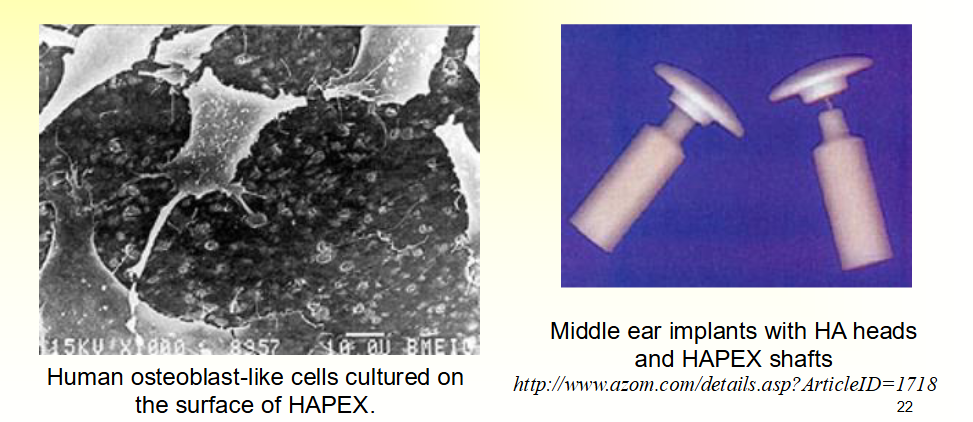Lectire 8 - Ceramics and Other Materials
1/18
There's no tags or description
Looks like no tags are added yet.
Name | Mastery | Learn | Test | Matching | Spaced |
|---|
No study sessions yet.
19 Terms
What are Ceramics, Glasses and Glass Ceramics?
Definition: an inorganic, nonmetallic solid
prepared from powdered materials and
fabricated into products through the application
of heatPrimarily ionic and covalent bonds
Categories of these materials
crystalline (bio-resorbable or inert) ceramics
glass, amorphous,
glass-ceramics, starts as a glass and ends up as
a polycrystalline ceramics possibly with a
residue glassy matrix.
General properties:
Ionic bond =>Difficult to shear, very low ductility,
high compressive strength, low tensile strength;Low thermal and electrical conductivity
Refractory and high Tm
High hardness dental materials
Aesthetically pleasing appearance
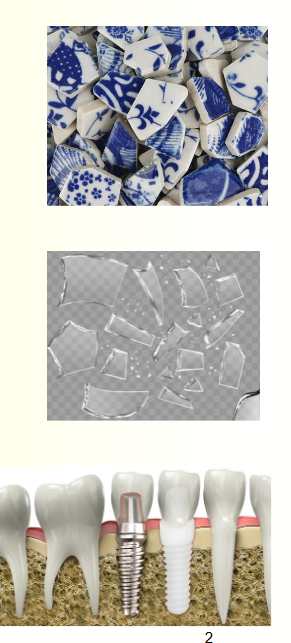
Variation in Slip Between Metal and Ceramics
• In ceramics, dislocation glide must occur over 2 atomic
positions due to the electroneutrality requirement
• Less slip in ceramics
=> More brittle fracture
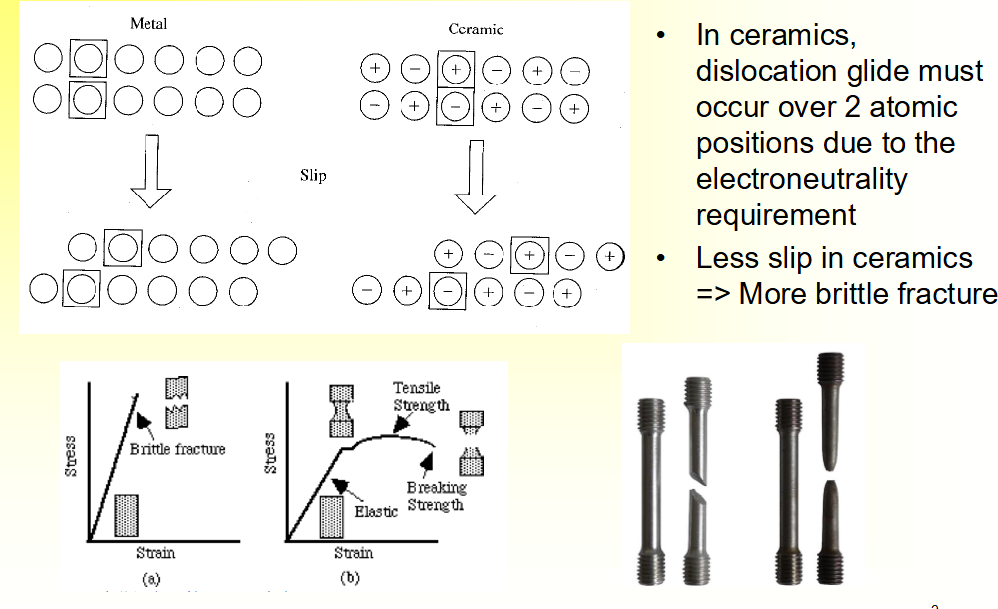
Nearly Inert Bioceramics
• Alumina (Al2O3)
• Sapphire or ruby
• Single crystal or polycrystalline
• Excellent corrosion resistance and biocompatibility (very thin fibrous layer)
• High strength → structural support such as bone plates, bone screws
• Small grain size and narrow distribution → high hardness and
low surface roughness → low friction and wear → joint replacement.
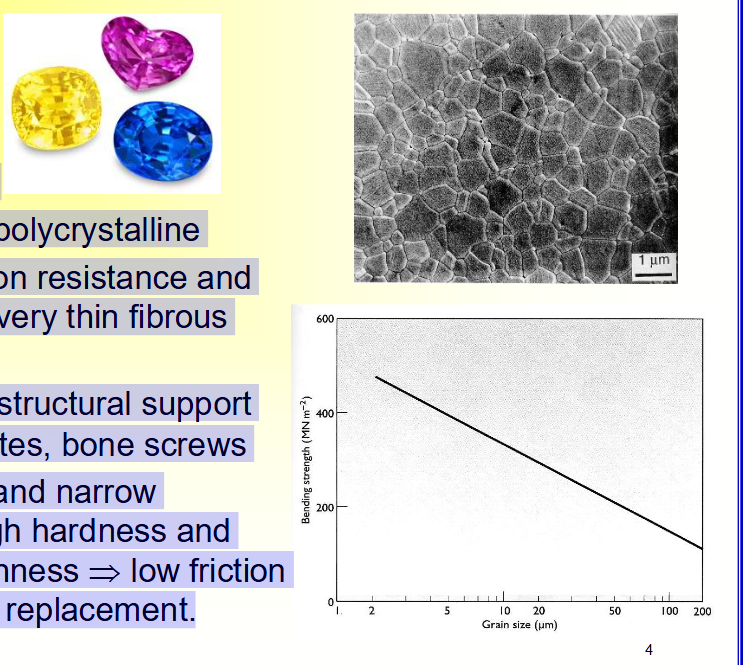
Joint Replacement Applications of Alumina
Alumina socket and ball, coefficient of friction decreases with time and approaches the value of a normal joint wear 10 times slower than metal-PE surfaces
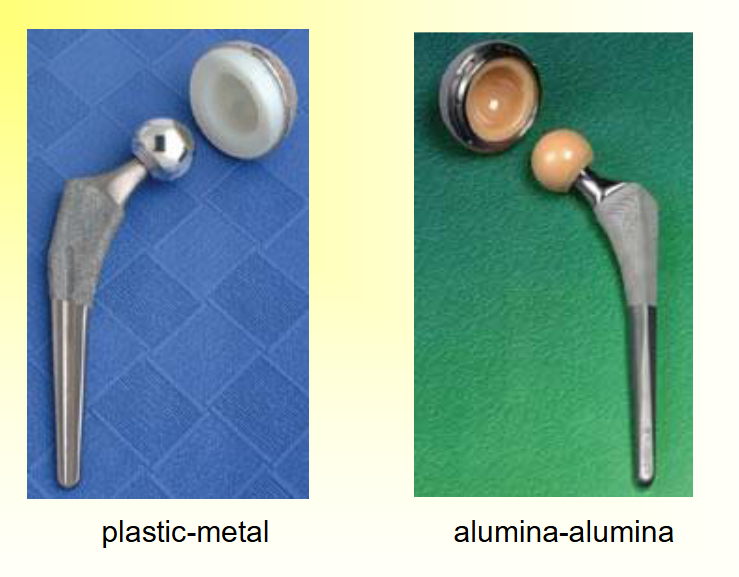
Biodegradable or Resorbable Ceramics:
What causes the biodegradability or resorption?
• Resorption or biodegradation is caused by
– Physiochemical dissolution, depending on the solubility of the
material and local pH
– Physical disintegration into small particles as a result of
preferential chemical attack of grain boundaries
– Biological factors, such as phagocytosis, which also causes a
decrease in local pH
Calcium Phosphate
• The mineral phase of bone and teeth is mainly calcium and
phosphate ions.
bIODEGRADABLE CERAMIC
• Solubility and hydrolysis decrease with increasing Ca/P ratio.
• Ca/P ratio 1 is not suitable for biological implantation.
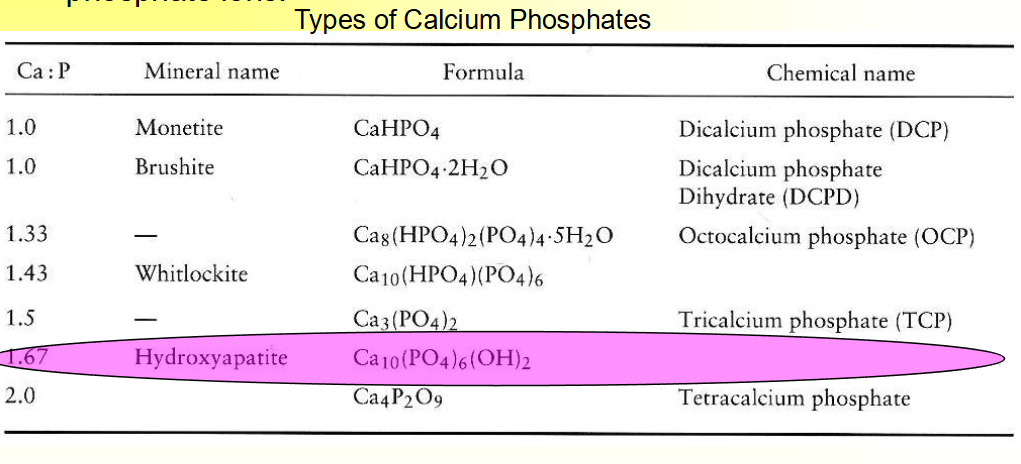
Hydroxyapatite (HA)
Ca10(PO4)6(OH)2,
Hard tissue contain 60% HA (mostly carbonate HA), 25% water and 15% organic materials. HA can be converted from coral or animal bone
Manufacturing:
– Ca(NO3)2 + NaH2PO4 → precipitate of HA → drying and filtering → furnace 1150 degrees C → grounding →sieving → pressing in a die → sinteringElastic modulus (40-117 GPa),
– Enamel: 74GPa
– Dentin: 21GPa
– Compact bone: 12-18 GPaHexagonal rhombic crystal
– Substitute of OH- by F-, chemical stability
– Defects and impurities can be characterized by X-ray diffraction (crystalline phase), FTIR (chemical groups)
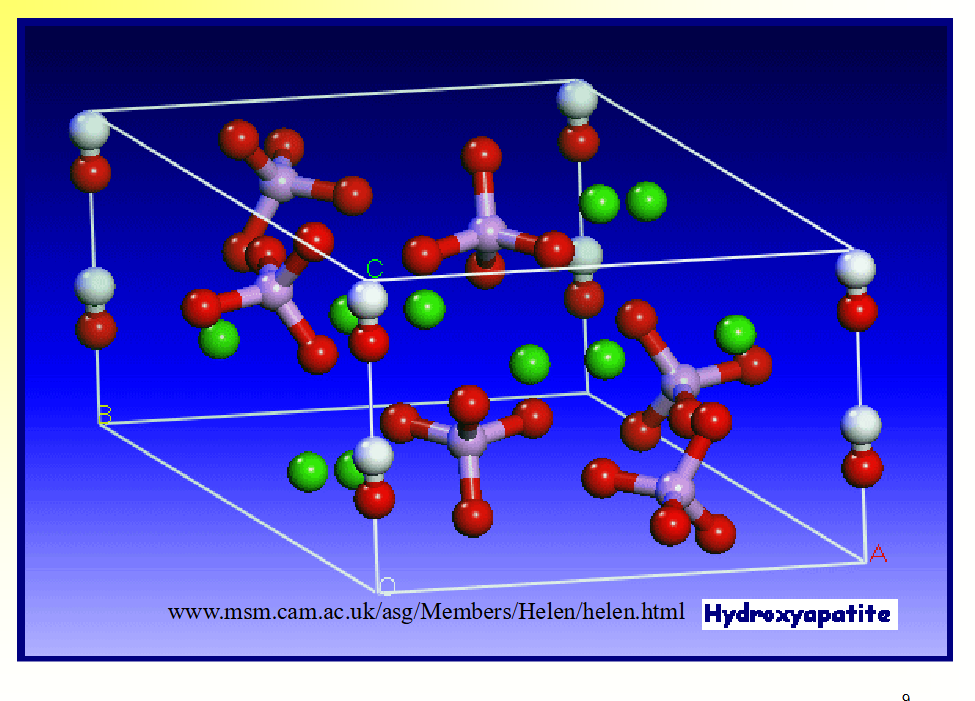
X-Ray Diffraction of HA
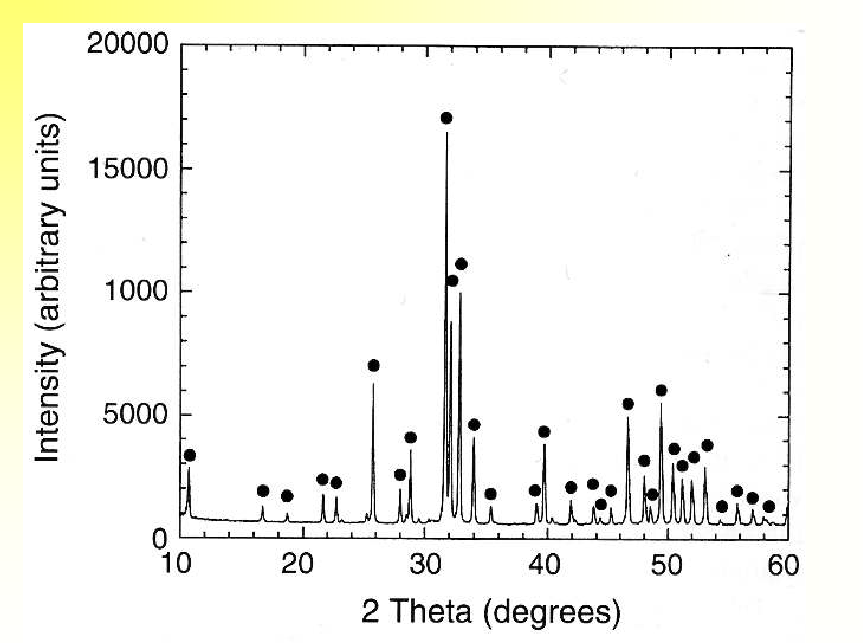
Typical FT-IR Spectrum of HA
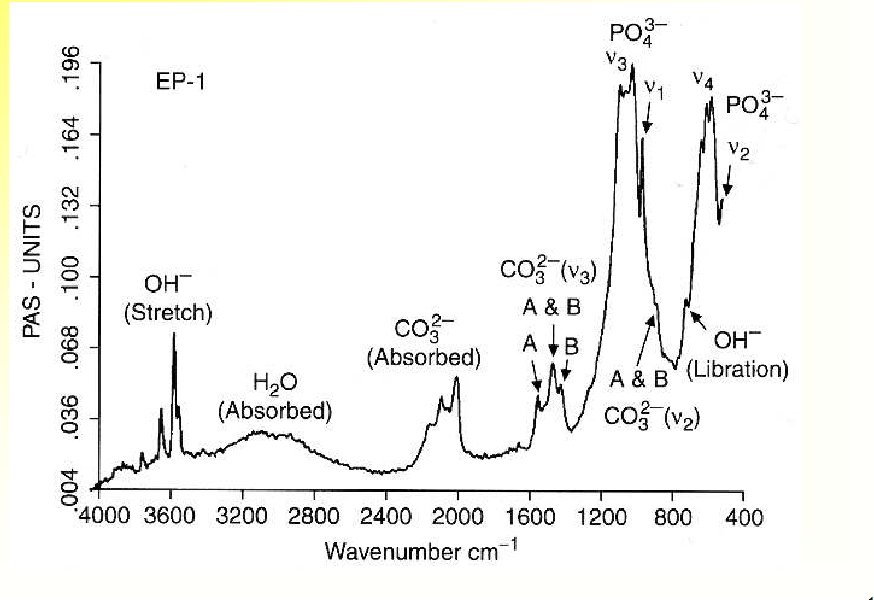
Factors Influence Degradation Rate of Calcium Phosphate
– Rate of degradation increases as
• Chemical susceptibility to dissolution increases
• Surface area increases
• Crystallinity decreases
• Crystal perfection decreases
• Grain size decreases
• F- substitution decreases
Clinical Application of Calcium Phosphate
• Advantages: bioactive and osteoconductive
• Bioactive bonding mechanism
– differentiated osteoblasts produce a cellular
bone matrix of 3-5 micrometer layer at the surface →
0.05 to 0.2 micrometer → normal bone attached
through a thin epitaxial bonding layer to the bulk
implant
• As dense form:
– small unloaded implants such as in the middle
ear implant,
• As porous form
– granules for filling bony defects in orthopedic
and dental surgery
• As coatings
– with reinforcing metal posts as in dental
materials,
• As fillers in composites
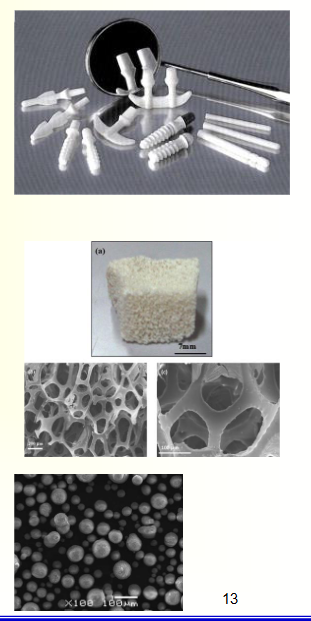
Bioactive Glasses and Glass-ceramics
• Specific composition highly reactive surface in aqueous medium
– SiO2 greater than or equal to 60%,
– high Na2O and CaO,
– high CaO/P2O5
• The surface forms a biologically active carbonated HA layer that
provides the bonding interface with tissue. The interfacial strength
the bulk strength of both the implant and tissue
• Clinical applications
– 45S5, SiO2 45%, Ca/P=5:1
– Ceravital®, middle ear surgery to replace ossicles damaged by chronic infection
– Periodontal defect repair, maintenance of the alveolar ridge for denture wearers
– Toothpaste ingredient against sensitivity
Compositional Dependence (w%) of Bone and Soft Tissue Bonding
The level of bioactivity of a specific material can be related to the time for more than
50% of the interface to be bonded, (t0.5bb) e.g.: (Index of Bioactivity) IB = (100/t0.5bb).
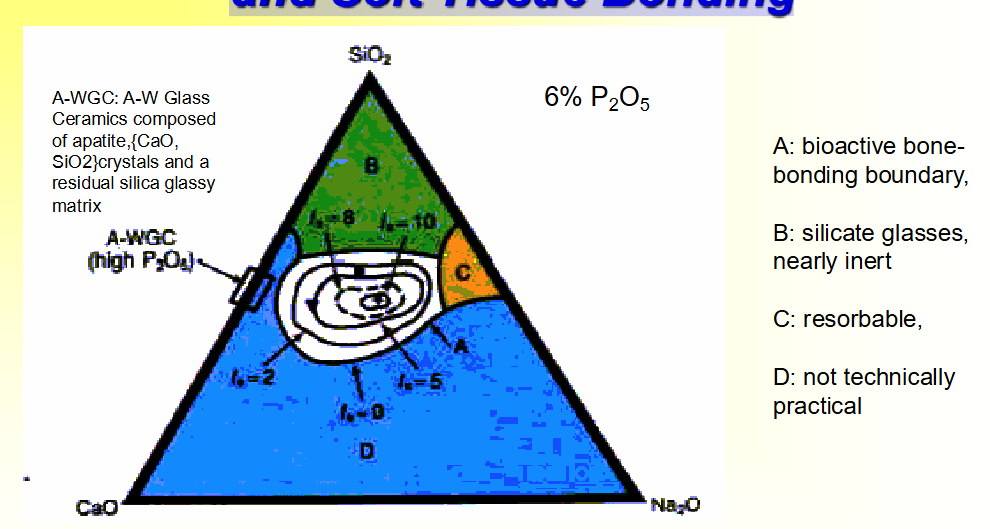
Sequence of Interfacial Reactions Involved in Forming a Bond Between Tissue and Bioactive Glass
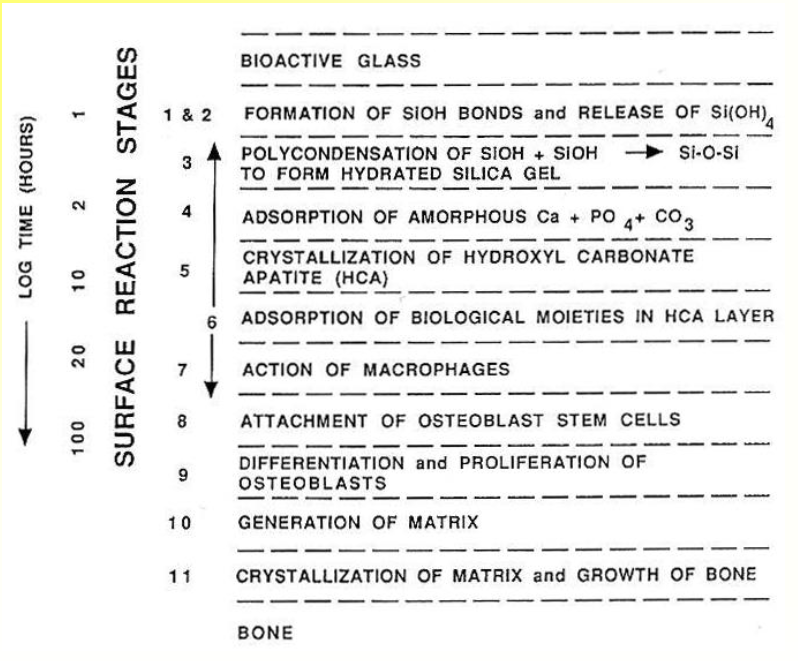
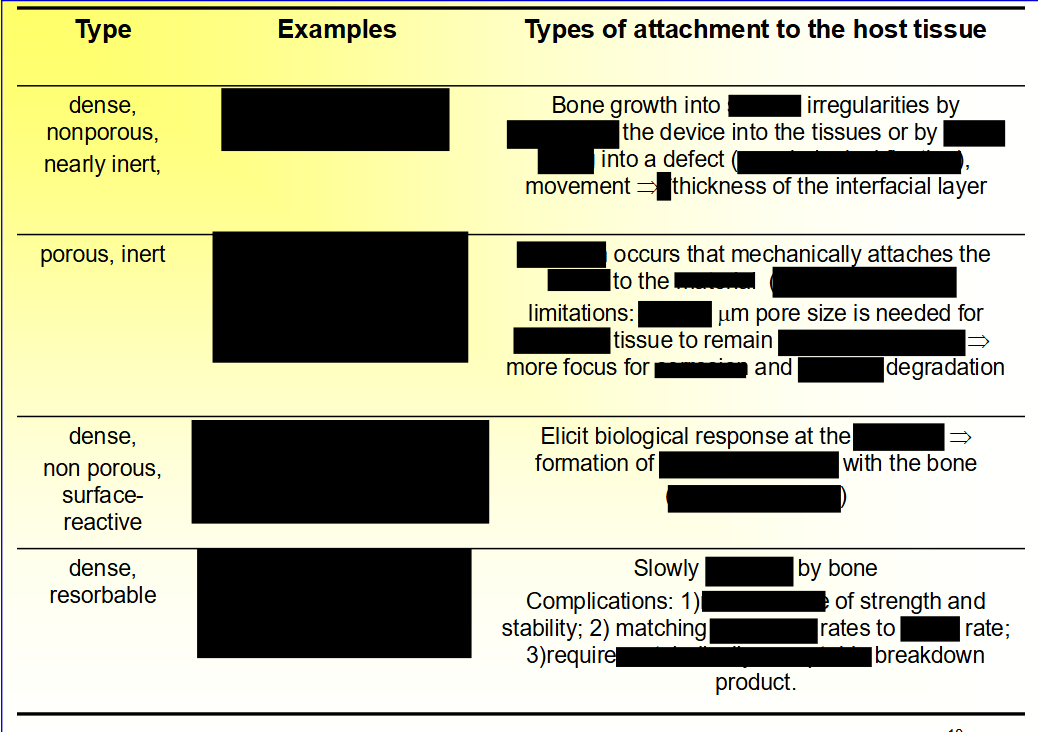
Fill out this chart
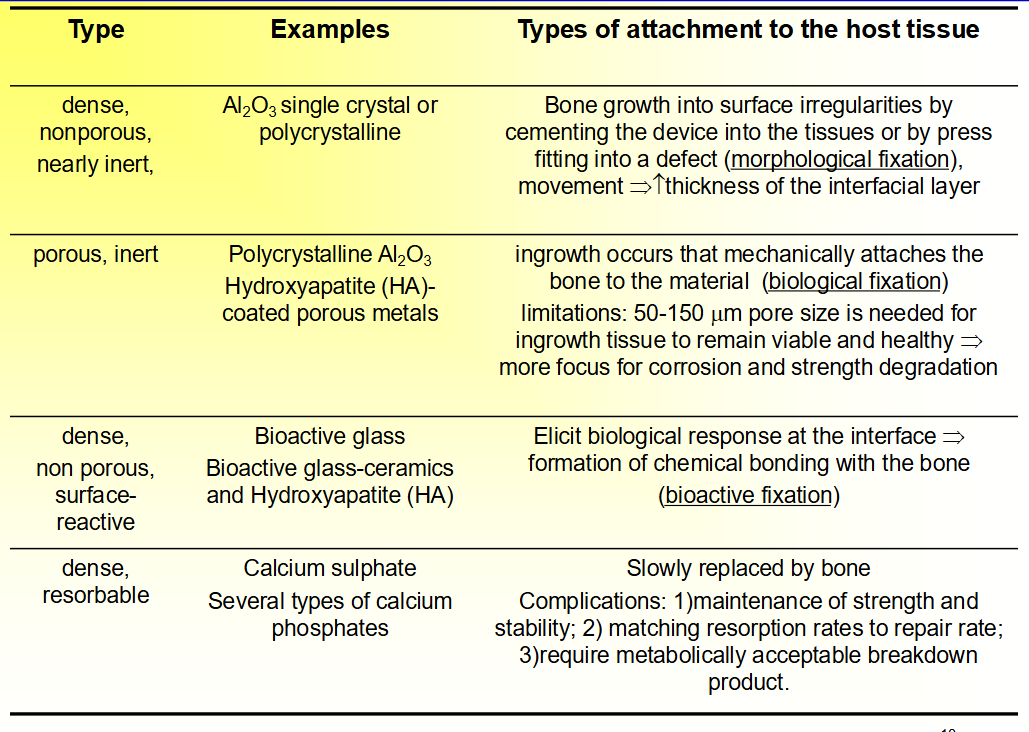
Crystalline Carbon Materials
• Crystalline: diamond, graphite, and fullerene
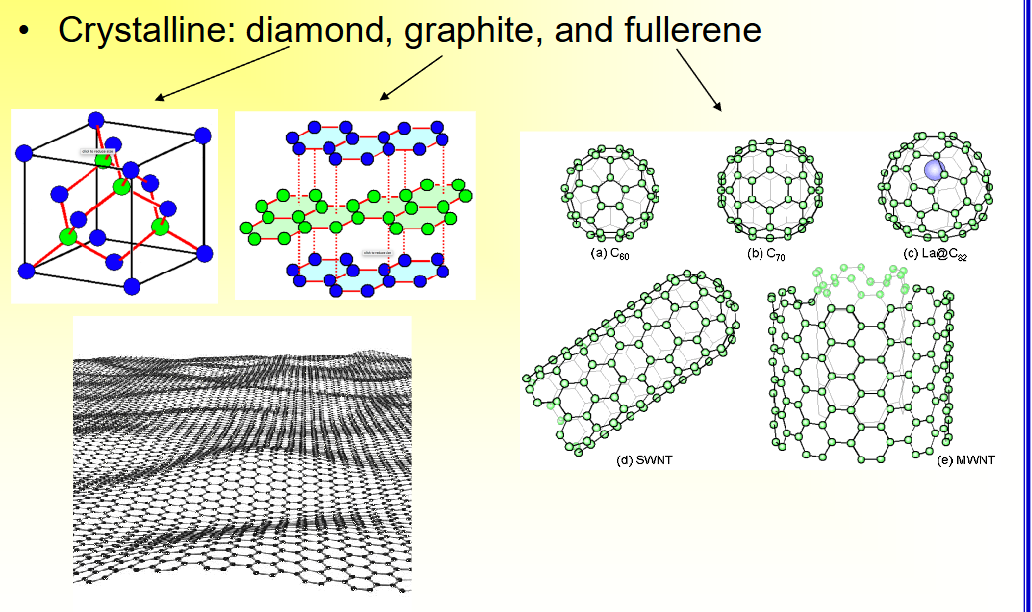
Quasicrystalline Carbon Materials
• Quasicrystalline,
– glassy carbon, extremely inert,
used as electrodes in
electrochemistry or prosthetics
– pyrolytic carbon as implant
surface coating, has high
mechanical strength than glassy
and graphite carbon, excellent
tissue and blood compatibility,
used in heart valves and finger
joint implants
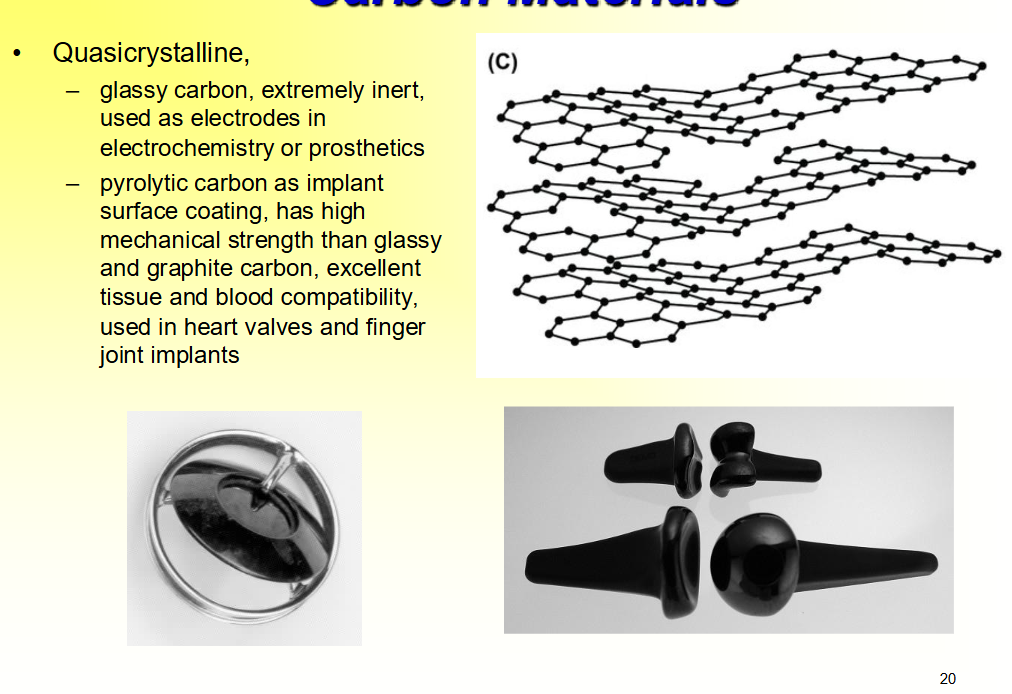
Composite Materials
• Consisting of 2 or more chemically distinct parts in the macro-scale, having a distinct interfaces separating them
• Fiber or particulate composites usually consists of one or more
discontinuous phases (usually stronger, called reinforcing materials)
embedded in a continuous phase (called matrix)
• The property of the composite material depends on
– Properties of each constituent
– Shape of the heterogeneities
– Volume fraction
– Interface
• Natural tissue such as bone and tendon or vessel are composites.
HAPEXTM
• Composite of hydroxyapatite in a polyethylene matrix
• Stiffness similar to cortical bone
• High toughness
• Bone bonding in vivo
• Orbital implant and middle ear implants
